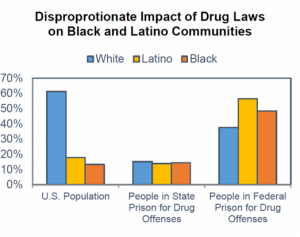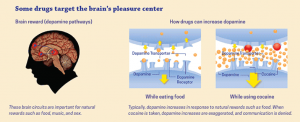We are all in largely unanimous agreement that having an addiction is not a good thing. The stigma surrounding drug addiction suggests that if I have an addiction it is my fault. Media representations of drug addicts are crazed, thrill-seeking hedonists or living for their next high junkies, stereotypes that diminish the experience of a drug addict and put people struggling with drug issues in a self-containing box. Anti-drug campaigns like “Just Say No” and “Say No to Drugs, Say Yes to Life” over-simplify the issue while blaming victims and addicts for their drug use.
The fact of the matter is: no one chooses to be addicted to drugs. No one wants to be an addict!
In actuality, there is a lot of misinformation thrown at us by propaganda and over-protective adults. Given that the global issue of drug use has become worse as policing and illegalization of drugs has increased, it is obvious that current methods for educating about and preventing drug abuse are ineffective. political anti-drug campaigns in the USA are founded chiefly upon racist ideologies that seek to incarcerate groups of people who stereotypically use specific drugs.
There are enough examples of how systematic oppression of minorities by racially targeted anti-drug campaigns. The big one is the War on Drugs. In the 1970s, the USA government began heavily policing and incarcerating for marijuana use. Is marijuana the worst thing ever? NO, but it just so happens that weed is associated with Black people. So, if governments could target marijuana users under the guise of ending drug use, the USA could throw everyone who they find using pot in prison and most of those people would turn out to be people of colour.[1] This schematic represents the number of people of colour who are incarcerated for drug offenses compared to the number of people of colour that make up the general population. It is quite clear that people of colour are drastically over represented in the prison system, despite using a comparable amount of drugs as the white population.[2]
Genetically speaking, some people are simply more prone to become addicted to drugs than others.[4] Drugs like cocaine and amphetamines trigger sustained activation of pleasure centres in the brain. The reward pathways are activated and sustained by dopamine, a hormone that populates the synapse as a result of natural rewards, and floods the synapse much more densely under the influence of stimulants. Under normal functioning, dopamine is very useful: it relieves stress, stimulates contentedness, and helps to regulate our desires. When we do something “good” like eating, our brains release dopamine into the reward pathway, which includes the VTA, OFC, and the thalamus.
It’s important to understand the societal implications and stigmas associated with drug addiction, because there is a lot more to it than a one-time choice.
[1]http://www.drugpolicy.org/issues/race-and-drug-war
[2]https://www.aclum.org/sites/default/files/styles/full_width/public/wp-content/uploads/2016/09/MarijuanaUseRates.jpg?itok=7ay-_qQ9
[3]http://www.drugpolicy.org/sites/default/files/styles/max_650x650/public/impact-of-drug-laws-on-black-and-latino-communities_1.png?itok=ikZkrHQM
[4]Ümit Sayın H*, A Schematic Overview of Addiction: Molecular Effects of Cocaine, Methamphetamine and Morphine on Limbic Neurons. Forensic Sci Add Res. 4(4). FSAR.000599.2019. DOI: 10.31031/FSAR.2019.04.000599
[5]https://d14rmgtrwzf5a.cloudfront.net/sites/default/files/drugstargetthebrainspleasurecenter.gif

 [5]
[5]